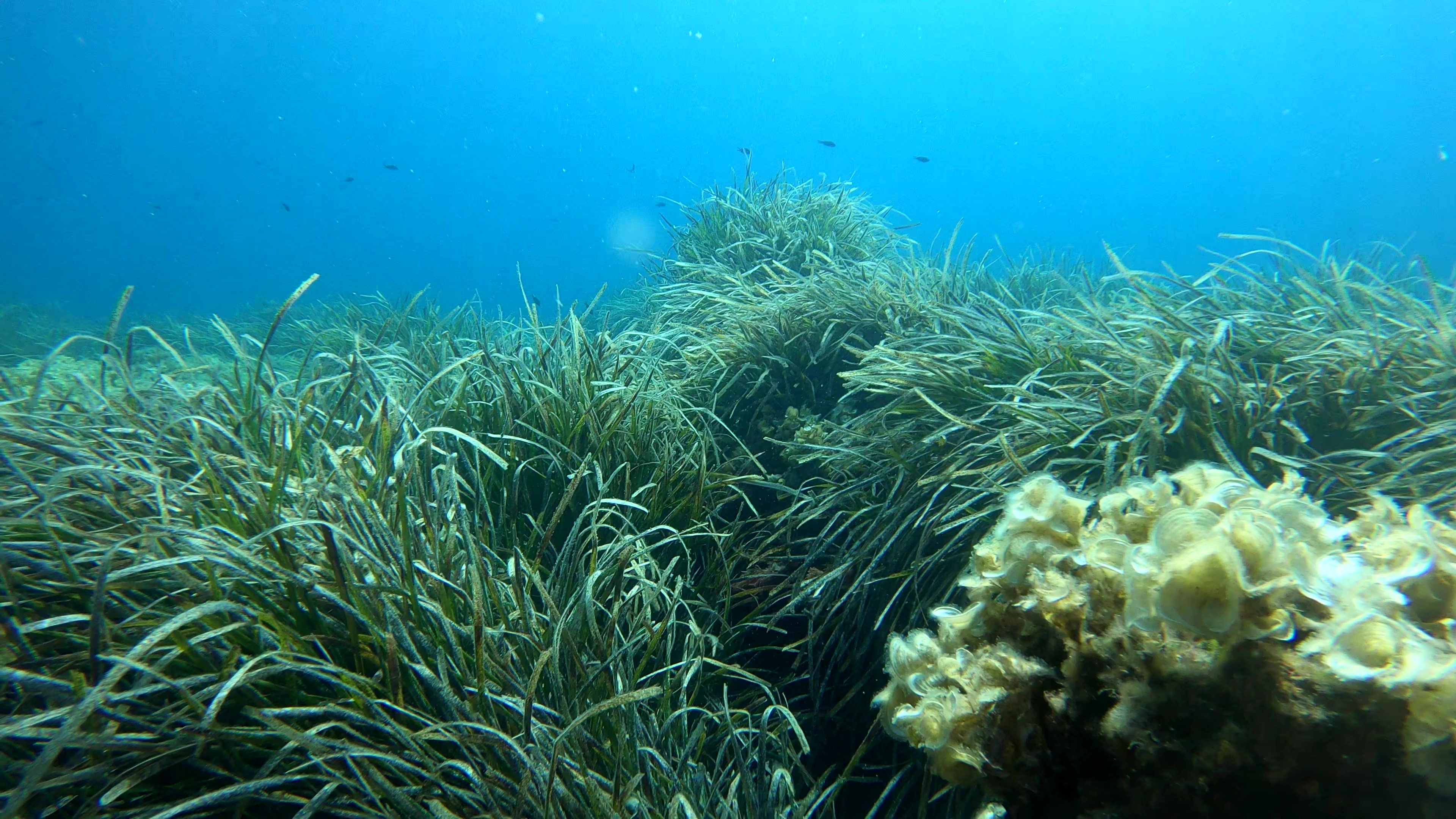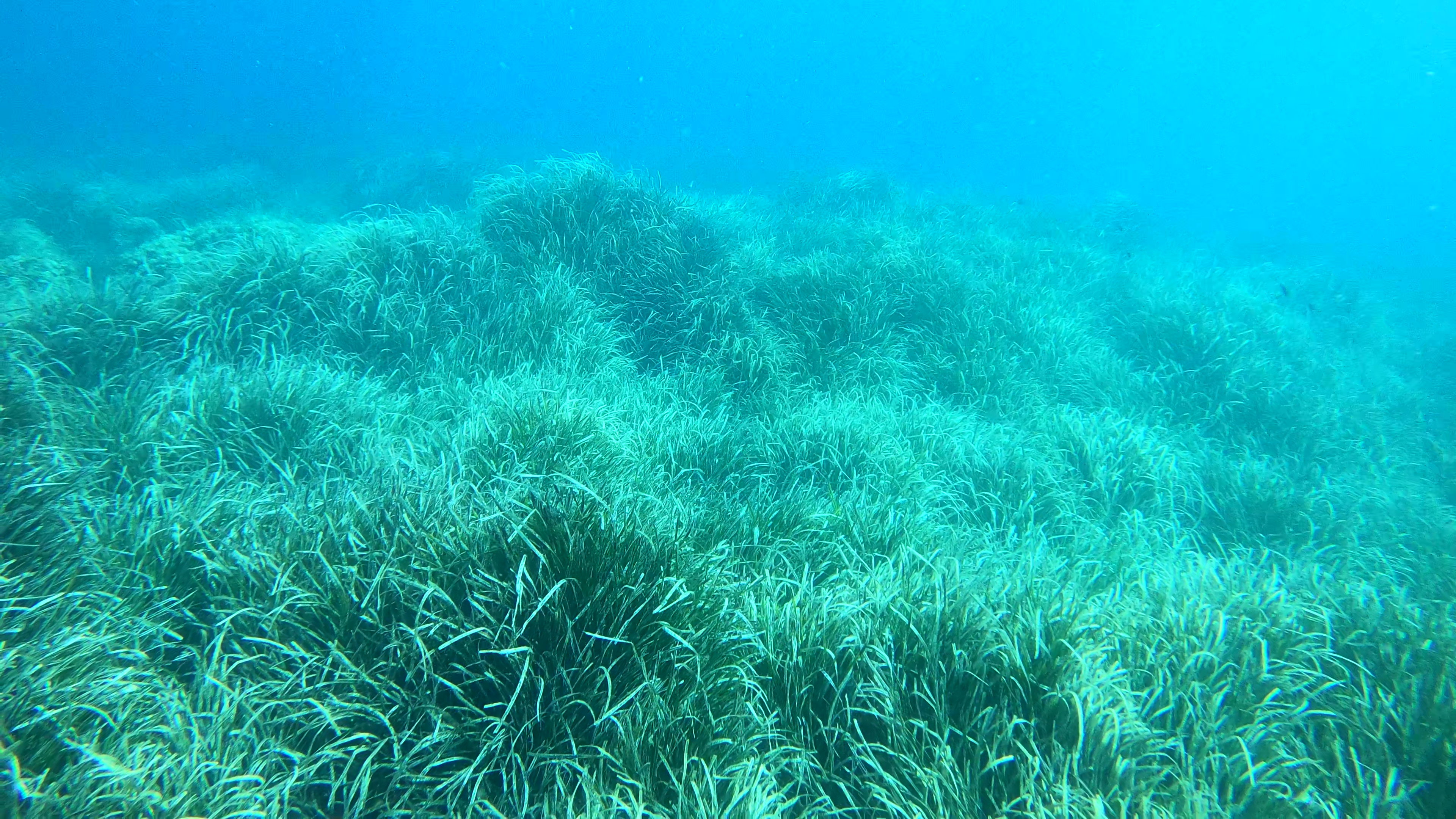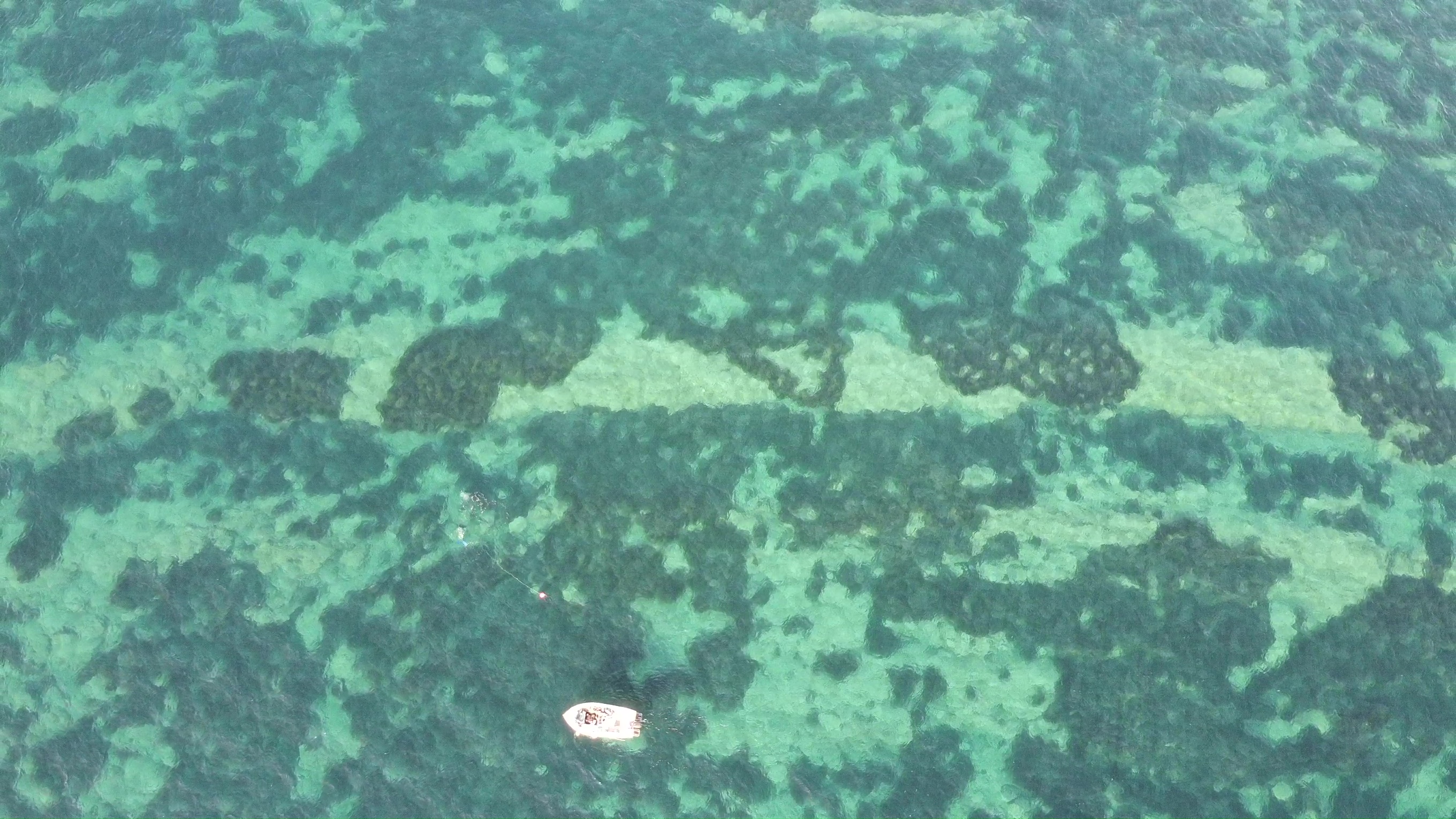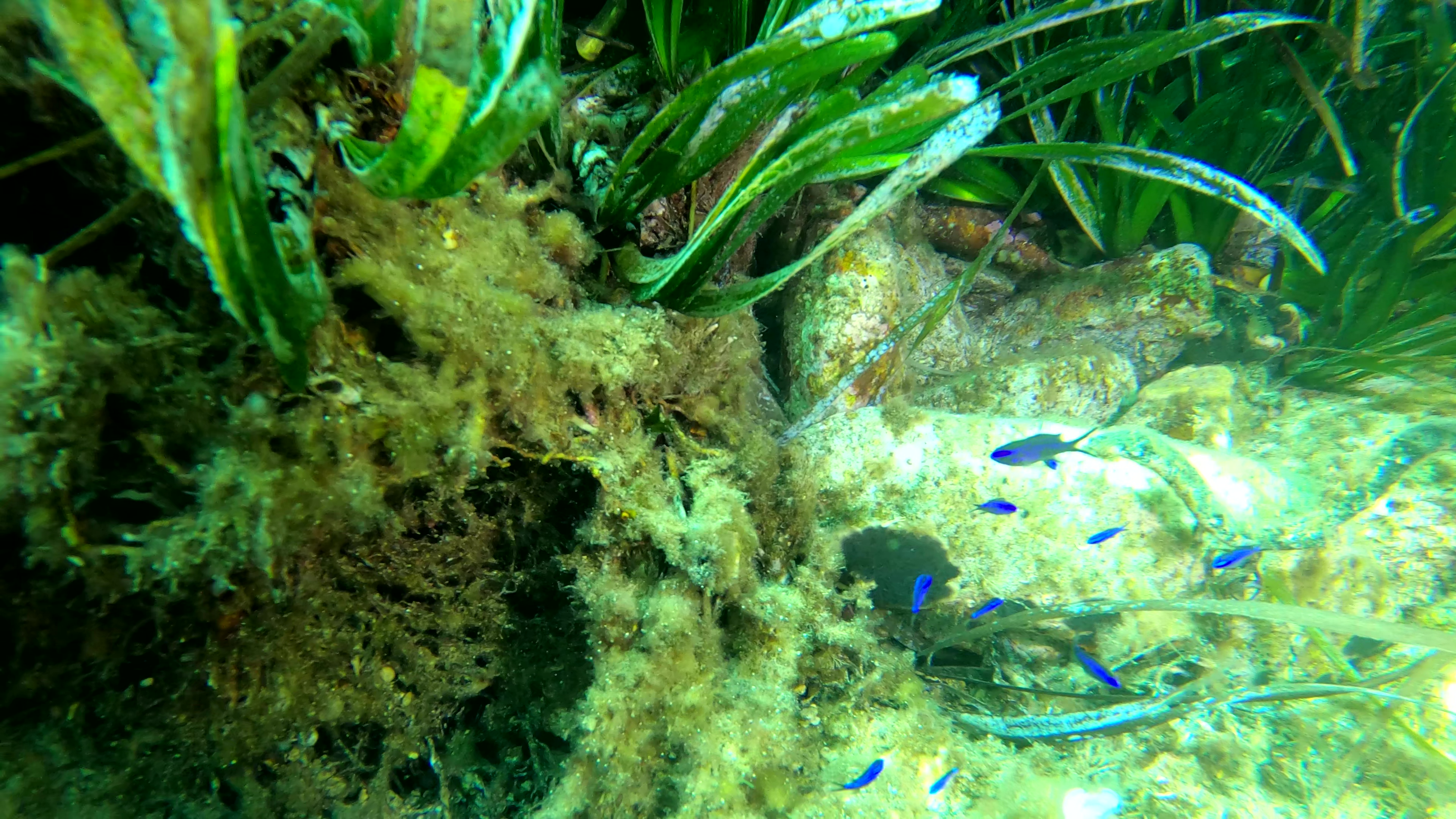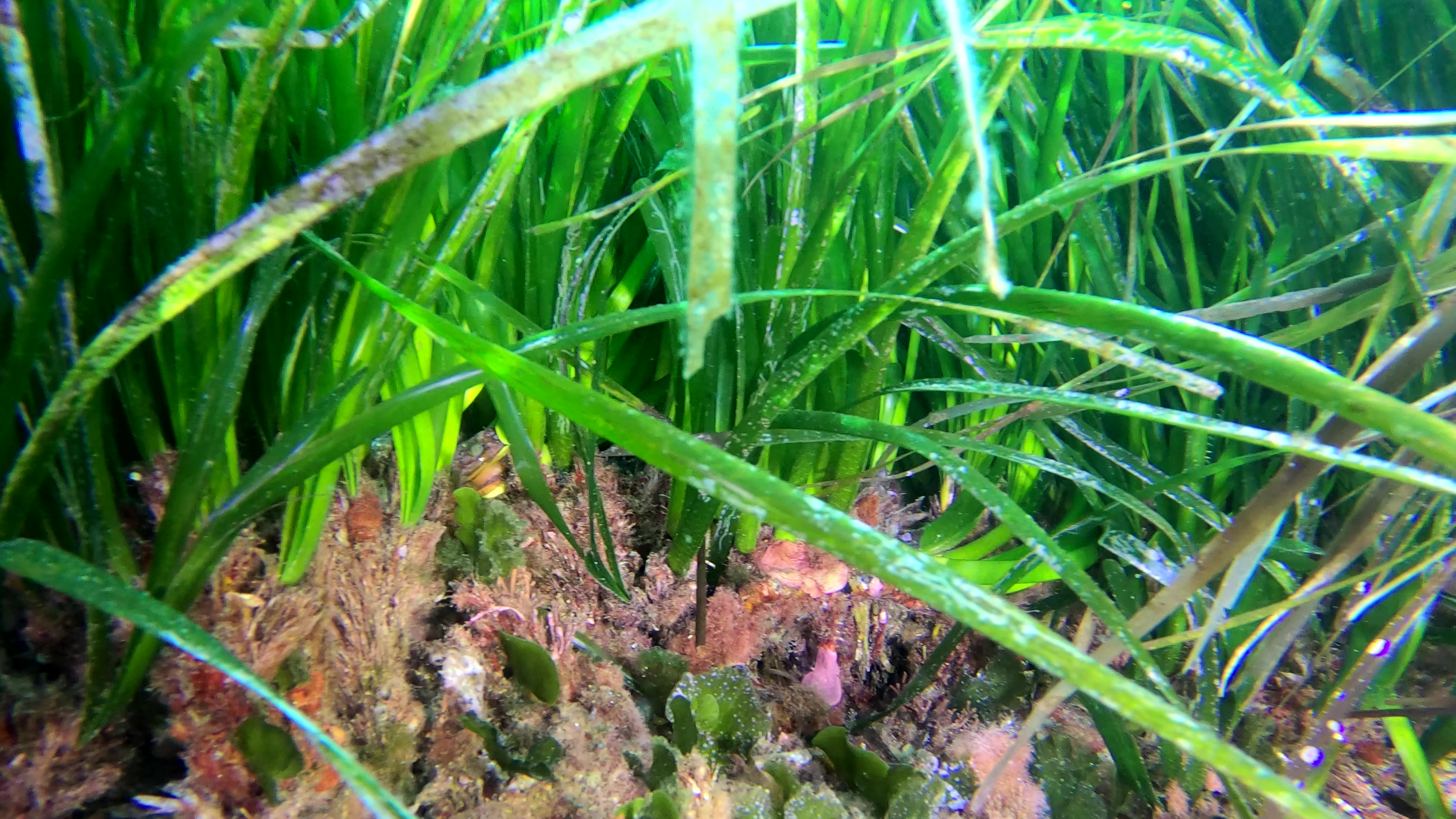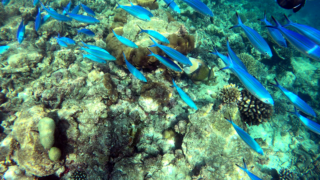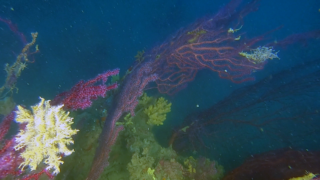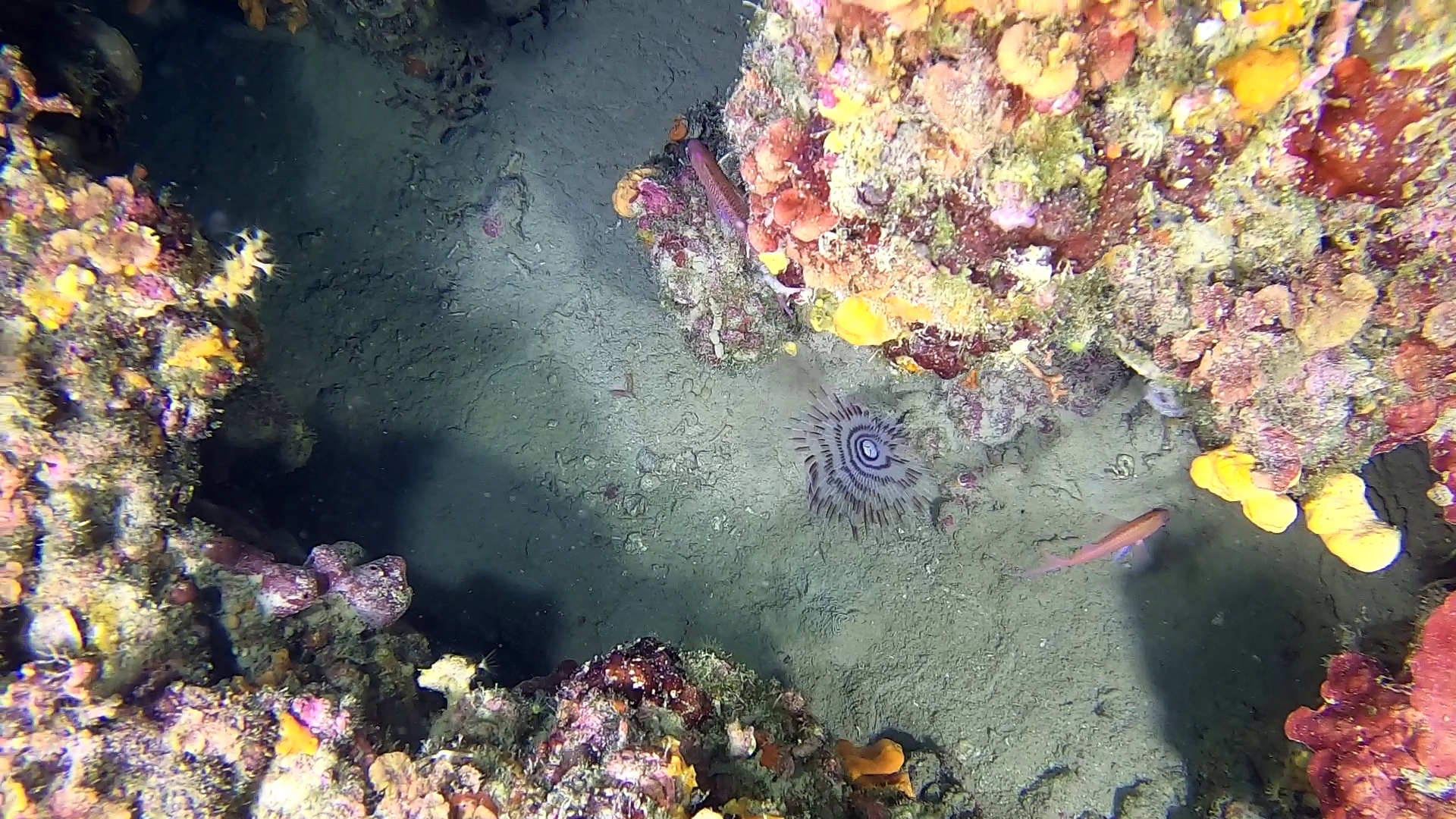Diving in Posidonia can make you think of a boring dive in which it is difficult to find fish and marine organisms. Sometimes this is certainly the case but the Poseidonia oceanica in the Mediterranean Sea is actually a safe haven and a nursery for many species of fish and animals. Posidonia is a plant and not an alga and like all plants it is extremely important for the ecosystem, even and above all in the marine ecosystem.
Like all plants, it oxygenates the environment and therefore the sea and captures carbon dioxide from the atmosphere, changing the acidity of the water and playing a fundamental role in regulating the ecological balance of the sea. Furthermore, at the end of the cycle, the dead plants that are deposited on the beach reduce erosion and therefore preserve the coasts.
Meadow of Posidonia is considered a good bioindicator for quality of coastal marine waters. It is a plant that must therefore be protected, worldwide the loss rate is 1-2% per year, a percentage that in the Mediterranean reaches as much as 5% and its decline is in fact irreversible, since the recovery of this plant it takes centuries. For this Posidonia oceanica is protected by European and national legislations, which define it as a “priority habitat”.
In this dive we see it quite luxuriant and alternates with areas of rock and corralligenous, we are on the top of the shoals of Vada in the province of Livorno, in the north / west part of the now famous “Faro di Vada” or “Fanale”. Many call this area “Il Cervello” (The Brain) for the particular geology and for the alternation of dark areas of Posidonia and light areas of the rocks and the coral seabed. Thanks to the beautiful images of the drone you can clearly see this feature that distinguishes this place which is a true paradise for sea lovers.
Posidonia oceanica (L.) Delile, 1813 is an aquatic plant, endemic to the Mediterranean Sea, belonging to the Posidoniacee family (monocotyledonous angiosperms). It has characteristics similar to terrestrial plants, has roots, a rhizomatous stem and ribbon-like leaves up to one meter long and united in tufts of 6-7. It blooms in autumn and spring produces floating fruits commonly called “sea olives”. It forms submarine grasslands that have considerable ecological importance, constituting the climax community of the Mediterranean Sea and exerting a notable action in protecting the coastline from erosion. Inside live many animal and vegetable organisms that find nourishment and protection in the prairie.
Morphology
Posidonia oceanica has roots that mainly serve to anchor the plant to the substrate, rhizome and ribbon-like leaves.
Detail of the rhizome
The rhizomes, up to 1 cm thick, grow both horizontally (plagiotropic rhizomes) and vertically (orthotropic rhizomes). The former, thanks to the presence on the underside of lignified roots up to 15 cm long, anchor the plant to the substrate while the latter, by increasing the height, have the function of counteracting silting due to continuous sedimentation. The two types of growth give rise to the so-called matte, a terraced formation consisting of the intertwining of layers of rhizomes, roots and trapped sediment. In this way the posidonia colonize an environment that is difficult for algae to use due to the lack of roots.
Reproduction
Sexual reproduction occurs through the production of flowers and fruits. The flowers are hermaphroditic and grouped in a spike-shaped inflorescence, green in color and enclosed between floral bracts. The floral axis attaches to the rhizome in the center of the bundle. The gynoecium is formed by a unilocular ovary which continues with a stylus and ends with the stigma; the androecium consists of three stamens with short anthers. Flowering is regulated by environmental factors (light and temperature) and by endogenous factors (age and size of the plant) and occurs in September – October in the grasslands closest to the sea surface, while it is moved by two months in the deeper grasslands. The pollen inside the anther is spherical in shape but becomes stringy as it is released into the water. There are no recognition mechanisms between pollen and stigma that prevent self-fertilization. Pollination is hydrophilic and can lead to fruit formation, although some abort before ripening which occurs after six months. Once ripe, the fruits detach and float to the surface.
The fruit, slightly fleshy and commonly called “sea olive”, is similar to a drupe and has a porous pericarp rich in an oily substance that allows it to float. When it rots, a seed is released, which falls to the bottom and if it finds the right depth conditions and the right type of sediment it germinates and gives rise to a new plant.
https://it.wikipedia.org/wiki/Posidonia_oceanica
futurismoasinara.com/posidonia-oceanica
Gallery
 English
English Italiano
Italiano
